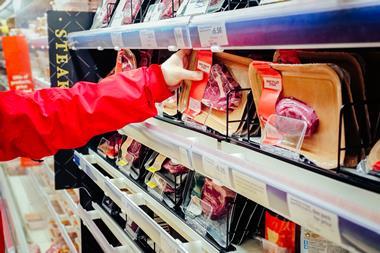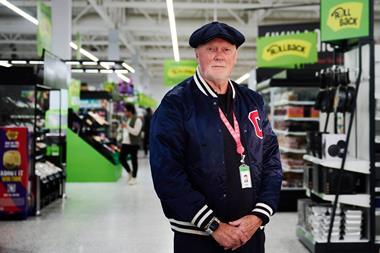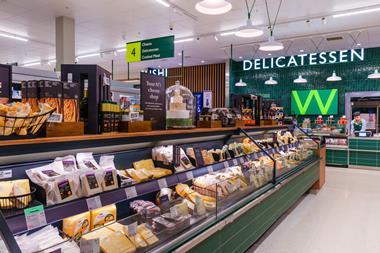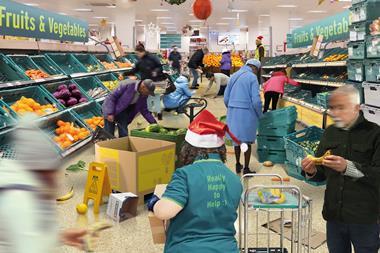It’s a time of rapid transformation for dairy alternatives. The £128.7m category has been livened up by a new generation of alternatives in the past 12 months, with almond, nut and coconut-based products pushing into the mainstream.
There’s been plenty of development in the more traditional soya segment of the category too, driven by new market entrants and innovative new product launches.
So why so much activity and how are the newcomers changing the category?
As the leading player in the dairy-free market, Alpro’s move beyond soya in January - it launched an almond and a hazelnut milk - was clearly significant, heralding its repositioning from a soya specialist to a “plant-based” company.
Widening the brand to nut-based products was a risk, as the company itself acknowledged. At the time of the launch, commercial director John Allaway said the new milks were likely to cannibalise soya milk sales, but nine months later he reports that the new additions have, in fact, boosted sales. “They have had a halo effect on soya and there has been a very positive reaction,” he says. “It is still too early to take a total view, but the business is certainly growing. We’re very encouraged by rates of sales.”
Alpro’s new products were joined in supermarkets in June by three almond milks from US supplier Blue Diamond, whose Almond Breeze brand is set to top $150m (£95.5m) in sales in the US this year. Although almond milk has been available in the past, Blue Diamond’s arrival is noteworthy: it’s backing its UK debut with a £7m campaign side and offers not only a standard, original flavour, but also an unsweetened and chocolate-flavoured variant - both signs this new sub-category of the dairy alternatives market is well established, and can mature rapidly.
Suppliers are offering these sophisticated and differentiated products partly because the number of consumers suffering from dairy and lactose intolerances is growing (The Grocer, 14 July). But there’s also growing demand for alternatives from mainstream shoppers, both here and in the US.
“Traditionally, these products used to attract a more niche customer base to help with specific complaints, but more recently dairy alternatives have developed more of a mass-market appeal as part of a general lifestyle change,” says Kyle Rowe, director of buying at NBTY Europe, the parent company of Holland & Barrett.
As part of this trend, Rowe believes customers have started to shift away from traditional soya-based alternatives, prompting Holland & Barrett to extend its dairy-free range with new almond, coconut, oat and rice alternatives.
The trend for new free-from options is also filtering through to own label, with Tesco adding rice, coconut and nut milks as part of its new chilled free-from dairy range, launched this May.
That’s not to say interest in soya products is on the wane, however. As mainstream consumers start to look at dairy alternatives as an addition to their conventional dairy purchases - rather than a replacement - suppliers are seeing lots of potential for NPD.
Delamere Dairy - which is better known for its goats milk - entered the market with a soya milk last October and has since launched two chilled ready-to-drink soya shakes, in chocolate and vanilla flavours, which are listed in Tesco. “We developed a different taste with our soya to offer a wider variety to consumers, and it is the taste difference that is proving positive for the brand,” says MD Ed Salt. He adds the company now plans to add further flavours to its shakes over the next 12 months to continue to broaden the appeal of the range.
Alpro has also kept its foot on the NPD pedal, launching pouring yoghurts in plain and vanilla flavours in March and lighter variants of its UHT chocolate and vanilla soya milks in June.
Alternative treats
New consumers coming in may have a healthy lifestyle at the forefront of their minds but, like those with food intolerances, they’re also after a treat every now and then, and that’s resulted in a boost for free-from desserts at the more luxurious end of the scale. The alternative yoghurts category has grown by 32.6% to £23.2m [Kantar Worldpanel 52 w/e 10 June 2012] over the past year, boosted by telling innovation.
Alpro expanded its desserts offering with indulgent Fruity & Creamy soya yoghurts in early 2012. Meanwhile, coconut milk yoghurt brand Co Yo secured its first national listing with Ocado last month. And Wot No Dairy, the dairy-free yoghurt alternative made from pea proteins by Redwood Wholefood Company, owned by former Mrs Paul McCartney, Heather Mills, is also continuing to perform strongly since launching last May. “Export sales are doing well too, particularly in Iceland and Australia,” says director Lee Rockingham.
Although alternative ice creams have dipped slightly, from £4.7m in 2011 to £4.5m this year [Kantar], arguably the biggest NPD initiative to hit the alternative desserts sector in the past 12 months was Arla Foods’ extension of its Lactofree brand into ice cream - the first lactose-free dairy ice cream to hit the market. The product, which comes in a vanilla flavour and rolled out to Tesco, Sainsbury’s, Asda and Waitrose in May, has become the fastest-growing product in the free-from frozen category since its launch, says brand manager Louise Allen.
With consumer interest in alternative desserts on the rise, retailers such as Holland & Barrett are keen to expand their dairy-free desserts ranges. “We are researching other new products which will appeal to our customer tastes in this sector,” says Rowe. Its range of Celtic Dairy Free Easter eggs also notched up good sales for the second year this Easter, he adds.
For a sector brimming with NPD from both established players and new market entrants, it’s not surprising that further investment is planned. Lactofree is planning to lead the fray - fresh from the launch of a new ad campaign in August, as well as the brand’s extension in January into spreads, Arla is now looking to revamp Lactofree’s distinctive packaging in 2013.
“We have not done much with the packaging since we launched,” says Allen. And while tightlipped on details for now, she says the revamp will focus on highlighting Lactofree’s taste credentials. “It is well received and recognised, but taste needs to come across more strongly.”
Alpro has just launched a new wave of TV ads, supported by sampling. This investment is key to keep the sector in growth, says Allaway. “We are always encouraged by new competition,” he says. “But they must be willing to invest.”
With a wider range of alternatives now on the market, new consumers entering and no let-up in NPD, you wouldn’t bank against increased investment - and further newcomers - hitting the sector in the next 12 months.
Sign in to comment on this article
Not logged in before? Register for FREE guest access today.
You will be able to:
- Read more stories
- Receive daily newsletters
- Comment on stories
Advert


















No comments yet